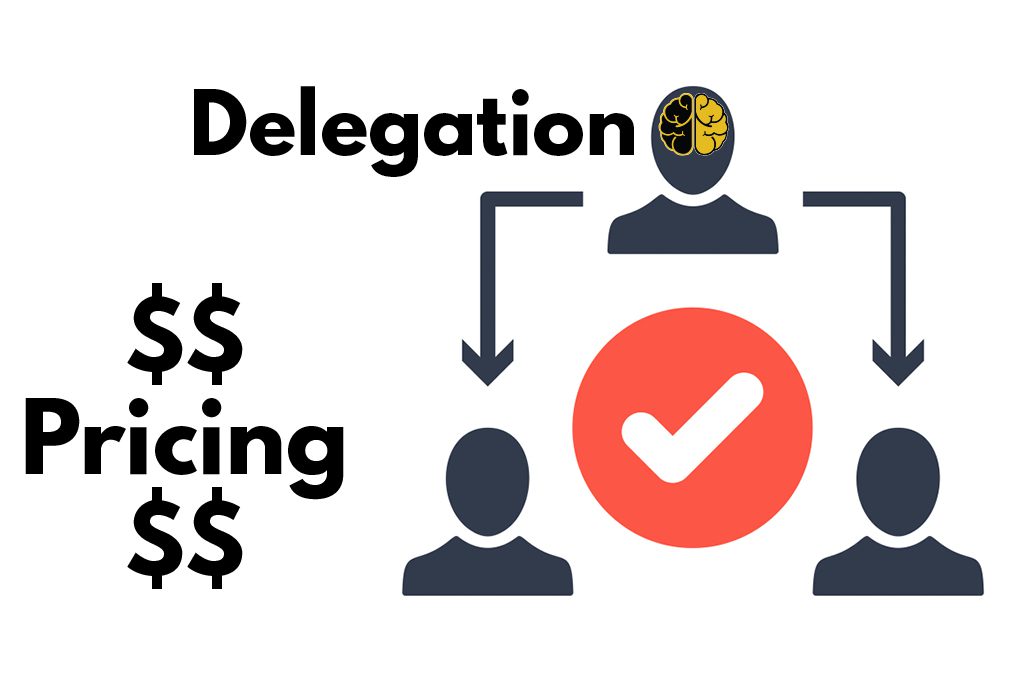Over the last several years, we’ve been tracking the best microgyms in the world. Their success led us to build the Two-Brain Growth ToolKit. In this series, I’m sharing the six things they all have in common—The Six Habits of Highly Successful Gyms.
I’ll wrap this series up on Jan. 24 with a free webinar on the topic.
In the previous installment, I wrote that the first two habits of highly successful gyms are Focus and Metrics. Today, we’ll focus on the next two habits: Delegation and Pricing.
Delegation
What’s the difference between working in the business and working on the business?
Working in the business means coaching classes and mopping floors.
Working on the business means hiring staff, marketing for growth and improving your operational excellence.
When you’re a coach, you should work hard to get better at coaching. But when you own a business, coaching is no longer your primary job.
The best gym owners in the world know that their jobs changed the moment they opened their own gyms. Now, some love coaching, and some actually have the goal to just coach all day. But all the best gym owners know that if they spend all their time coaching, their businesses will die.
The best gym owners focus their time on the things that will grow their businesses. To figure out where they should focus, they calculate their Effective Hourly Rate.
Calculate your daily wage (your monthly wage divided by 30 days). Then count up the hours you spend working. Do a time audit to determine where you spend them. Divide your daily wage by the hours you work in a day. That’s your Effective Hourly Rate.
For example:
$2,500 / 30 days = $83.33 per day
$83.33 / 13 hours = $6.41 per hour (ouch)
Now, prepare to delegate the lowest-value roles on your schedule.
Group tasks together to make up the roles. You can download all the roles and tasks in your gym from our guide “Free Hiring Plan and Job Descriptions,” found here.
After you assign an hourly value to each role, hire someone to replace you in the cheapest one. Use that time to work on a higher-value role, like sales. We call this “climbing the value ladder,” and it’s part of the step-by-step process we mentor you through in our Incubator and Growth programs.
Pricing
The best gyms in the world know what they’re worth and charge that amount.
Other gym owners “know they should charge more” or “know they’re worth more,” but they don’t know exactly what they’re worth and don’t charge anywhere near that amount. The weakest gyms charge what their owners think clients can afford to pay (they’re always wrong and they always guess low).
How do you set your prices?
Weak gym owners look to see what everyone around them is charging and then subtract $20.
They think, “This is what the market will bear!” and then justify that myth with stuff like “I’m in a poorer demographic.”
They tell themselves stories that cripple their businesses.
How should you set your prices?
Set your rates based on what you want to make.
Let’s say you want to make $100,000 on a business with a 33 percent profit margin.
You’re going to have to work to make that profit margin happen, but you can do it. On this episode of Two-Brain Radio, Peter Brasovan and Jared Byczko tell you how they did it in a gym with revenues over $1 million (it’s a great podcast episode).
Here’s the math:
We use the number 150 (Dunbar’s number) to make the math simpler.
What about discounts? Even for marketing purposes?
Discounts mean you’ll have to work harder for less money. And they don’t work anyway.
With discounts and sales, you’ll need more clients. That means more coaches, more space, more equipment. You’ll need to spend more time and money on marketing and more time and money on retention. You’ll have to closely monitor your churn rate. You’ll always be seeking the next big marketing idea instead of comfortably banking on a loyal audience. You’ll always be victim to underpaid coaches leaving, discount gyms luring clients away and people complaining about your programming.
It’s been proven over and over again—if you haven’t heard stories from gyms that were killed because of the discounts they offered, it’s because they’re gone.
When we post stories about gyms that charge $400-$1,000 per month for membership, many other gym owners don’t believe it’s possible. They comment on our social-media posts and deny the truth before them. But gym owners who have successfully implemented what they’re taught in our Incubator know the truth and live it. They follow the six habits and see why the top gyms in the world are so successful.
Want a mentor? Click here to book your call and get started.
Spoiler alert: Every one of the top microgym owners in the world has a business mentor.
Other Media in This Series
The Six Habits of Highly Profitable Gyms
Habits of Highly Successful Gyms: Focus and Metrics
Two-Brain Radio: The $1 Million Gym Built by Two Guys Who Once Rationed Paper Towels






